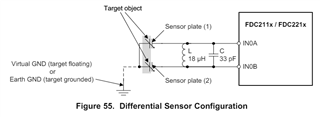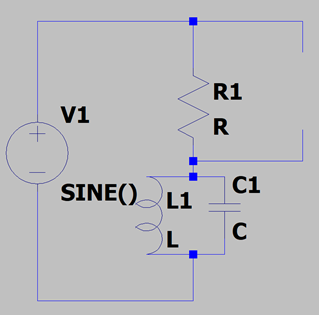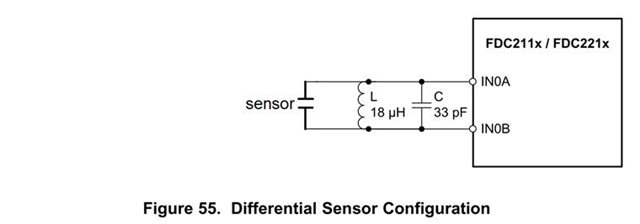Tool/software:
Dear TI Team,
we wanted to set up the FDC in its differential operating mode.
Therefore we chose a SMD ceramic capacitator with 20 pF (+5 pF for our sensor electrodes) and a shielded SMD inductance of 20 uH to set up our LC-circuit.
Thus, the calculated resonance frequency is 7.1 MHz. On a function generator we measured the resonance frequency of our LC-Circuit, (tolerances aside) confirming this resonance frequency.
After connecting the LC-circuit to the FDC (with traces, as short as possible and not surrounded by copper while the LC-circuit is not surrounded by copper as well) we encountered a problem: The resonance frequency shifted significantly, now reaching only about 3.7 MHz. Signals are shown in the attached image, but also over I2C we measure this frequency.
Is there any explanation why we measure this frequency?
Kind regards





